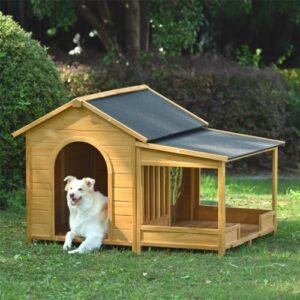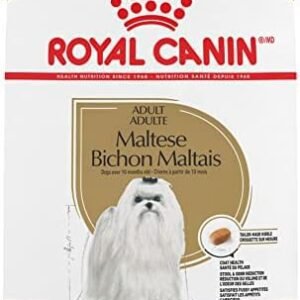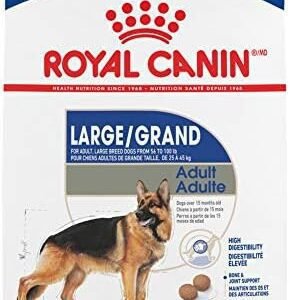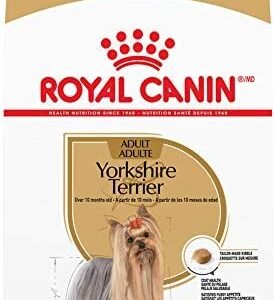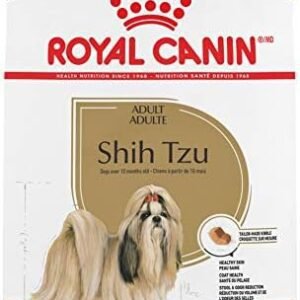Are you the kind of person who enjoys a handful of crackers with your favorite toppings or as a quick snack during the day? The crisp and crunchy delight of crackers is a favorite for many. But what about our canine companions? Can dogs eat crackers, or should they be strictly off the menu for our furry friends?
Our pets are an integral part of our lives, and we often find ourselves sharing our meals or snacks with them. However, when it comes to their diet, we need to be discerning and considerate. Not all human foods are safe for dogs, and some can even be harmful.

In this article, we will delve into the fascinating world of canine nutrition and answer the burning question: can dogs eat crackers? We’ll explore the pros and cons of feeding crackers to your dog, how much is too much, and what to do if your dog consumes a part of crackers that is not suitable for their consumption.
As responsible pet owners, it’s vital to be well-informed about what our dogs can and cannot eat. So, let’s embark on this journey to discover whether crackers can be a part of your dog’s snack options or if they should remain a human-exclusive treat.
Table of Contents
Can Dogs Eat Crackers?
When it comes to feeding our canine companions, curiosity often leads us to explore the realm of human food. One common question that arises is whether dogs can safely enjoy crackers. Let’s dig into this question, evaluate the potential benefits and drawbacks, and determine whether crackers can find a place in your dog’s diet.
Safety of Crackers for Dogs
Crackers, in general, are not toxic or inherently dangerous to dogs. Many dogs are known to relish the specific taste and texture of crackers, finding them a delightful treat. The key here, however, is moderation. While crackers are generally safe for dogs, they should be offered in limited quantities.
Nutrition Facts of Crackers
To understand the nutritional content of crackers, let’s break down the components that make up these snacks. Crackers are typically composed of:
- Carbohydrates
- Fats
- Sodium (salt)
- Fiber
- Occasionally, certain additives and flavorings
While crackers can provide a quick source of energy due to their carbohydrate content, they may not be the healthiest option for your dog. Let’s explore the nutritional benefits and potential drawbacks in more detail.
Nutritional Benefits of Crackers for Dogs
Crackers offer some nutritional benefits for dogs:
Carbohydrates: The carbohydrate content in crackers can provide a quick energy boost for your dog, making them a handy option for active dogs.
Fiber: Crackers may contain dietary fiber, which can aid in digestion and promote regular bowel movements.
Taste and Texture: Some dogs simply enjoy the taste and crunchiness of crackers, making them a satisfying and enjoyable treat.
Drawbacks of Feeding Crackers to Dogs
While there are some nutritional benefits, crackers also come with potential drawbacks:
High Sodium Content: Many commercial crackers are high in salt (sodium), which can be harmful to dogs when consumed in excess. Excessive salt intake can lead to sodium ion poisoning, causing symptoms like vomiting, diarrhea, excessive thirst, and more severe health issues.
Additives and Flavorings: Some crackers may contain additives or flavorings that are not suitable for dogs. These additives can be problematic and may lead to adverse reactions.
Empty Calories: Crackers primarily consist of carbohydrates with limited nutritional value. Feeding your dog excessive amounts of crackers can lead to unnecessary calorie intake without providing essential nutrients.
Crackers as an Occasional Treat
To strike a balance, it’s important to consider crackers as an occasional treat for your dog rather than a regular part of their diet. The high salt content and the presence of additives and flavorings make them less suitable as a staple food.
As with any treat, moderation is key. When offering crackers to your dog, ensure they are plain, unsalted, and free from any potentially harmful additives. Always consult your veterinarian if you have concerns about your dog’s diet or if they have specific dietary restrictions or health issues.
In the next section, we’ll explore how much is too much when it comes to feeding crackers to your dog, considering factors like their size, age, and overall health.
How Much Crackers Can a Dog Eat?
Understanding the right serving size of crackers for your dog is crucial to ensure their safety and well-being. Let’s delve into the specifics of feeding crackers to your furry friend.
Emphasizing Moderation
When it comes to feeding crackers to your dog, the golden rule is moderation. Treats, including crackers, should not constitute more than a certain percentage of your dog’s daily calorie intake. The exact proportion can vary depending on factors such as your dog’s size, age, and activity level. Consulting your veterinarian for personalized recommendations is always a wise choice.
Start Small and Observe
Before introducing crackers into your dog’s diet, it’s advisable to start with a small piece and observe how your dog reacts to it. Some dogs may have sensitive stomachs or be prone to allergies, so it’s essential to be cautious. If you notice any adverse reactions, such as vomiting, diarrhea, or signs of discomfort, discontinue feeding crackers immediately.
Proper Preparation
Preparing crackers for your dog’s consumption is an important step in ensuring their safety. Here are some key points to consider:
Choose Plain Crackers: Opt for plain crackers that are free from excess salt, additives, or flavorings. The simpler, the better.
Break into Small Pieces: Instead of offering a whole cracker, break it into smaller, bite-sized pieces. This not only helps with portion control but also minimizes the risk of choking.
Avoid Salted Varieties: Salted crackers are generally high in sodium, which can be harmful to dogs. Stick to unsalted options.
Size and Breed Considerations
The size and breed of your dog play a significant role in determining how much crackers they can tolerate. Larger dogs may have a higher tolerance for treats like crackers compared to smaller breeds. Here are some size-based considerations:
Small Dogs: Small breeds should be given a smaller serving size, typically one or two small pieces of cracker.
Medium Dogs: Medium-sized dogs can handle a slightly larger portion, but it’s still crucial to monitor their intake carefully.
Large Dogs: Large breeds may be able to consume more crackers, but even for them, moderation remains important.
Keep in mind that some dogs have more sensitive stomachs than others, so it’s essential to gauge their individual tolerance levels.
Appropriate Serving Sizes
To provide a rough idea of appropriate serving sizes of crackers based on your dog’s weight, you can refer to the following general guidelines:
Small Dogs (under 20 lbs): 1-2 small cracker pieces
Medium Dogs (20-50 lbs): 2-4 small cracker pieces
Large Dogs (50+ lbs): 4-6 small cracker pieces
Remember that these are general recommendations and that individual dogs may have varying tolerances and dietary needs. The best approach is to consult with your veterinarian to determine the ideal serving size for your specific dog.
In the next section, we will explore the potential risks and drawbacks of feeding crackers to dogs, including allergies and other adverse reactions. Understanding these risks will help you make informed decisions about your dog’s diet.
What Are the Risks of Feeding Crackers to Dogs?
Feeding crackers to your dog can be a delightful experience for both you and your furry friend. However, it’s essential to be aware of potential risks and drawbacks associated with offering these snacks to your canine companion. In this section, we will address various concerns related to feeding crackers to dogs.
Food Allergies in Dogs
One of the primary risks when feeding crackers to your dog is the possibility of food allergies. Just like humans, dogs can develop allergies to certain foods. While crackers may seem harmless, some dogs may exhibit allergic reactions when consuming them. These reactions can range from mild to severe and may include symptoms such as:
Itchy Skin: Your dog may scratch, bite, or lick their skin excessively, leading to redness and discomfort.
Gastrointestinal Distress: Food intolerance or allergies can cause digestive issues in dogs, leading to symptoms like vomiting, diarrhea, or upset stomach.
Ear Infections: Some dogs may develop ear infections as a result of food allergies, which can cause ear scratching and discomfort.
- Respiratory Problems: In rare cases, dogs with severe food allergies may experience respiratory issues like coughing or wheezing.
Hazards Related to Components of Crackers
Crackers often contain ingredients that can be problematic for dogs:
Salt (Sodium): Many crackers are high in salt, which can lead to sodium ion poisoning when consumed in excess. Symptoms of excessive salt intake include excessive thirst, vomiting, diarrhea, and, in severe cases, seizures or death.
Additives and Flavorings: Some crackers may contain additives, seasonings, or flavorings that are not suitable for dogs. These can lead to adverse reactions, such as gastrointestinal distress, vomiting, or diarrhea.
Signs and Symptoms of Adverse Reactions
It’s important to be vigilant and watch for signs and symptoms of adverse reactions in your dog after they consume crackers. If you notice any of the following, it’s best to discontinue offering crackers and consult with your veterinarian:
Vomiting: Frequent or persistent vomiting is a concerning sign that should not be ignored.
Diarrhea: Loose or watery stools can indicate digestive distress.
Excessive Thirst: If your dog drinks unusually large amounts of water after consuming crackers, it may be a sign of excessive salt intake.
Itching and Scratching: Excessive itching, scratching, or the development of skin rashes may signal an allergic reaction.
Lethargy: If your dog appears unusually tired, lacks energy, or seems unresponsive, it could be a sign of an adverse reaction.
Respiratory Issues: Wheezing, coughing, or difficulty breathing should be taken seriously and promptly addressed.
Specific Issues Caused by Consuming Crackers
While not all dogs will experience issues, some may develop specific problems from consuming crackers:
Weight Gain: Due to their carbohydrate content, excessive consumption of crackers can lead to weight gain in dogs, which may contribute to obesity.
Nutrient Imbalance: If your dog consumes a significant amount of crackers, it may disrupt their balanced diet and lead to nutrient imbalances.
Conclusion
Feeding crackers to your dog should be done with caution and in moderation. While some dogs may enjoy an occasional cracker without adverse effects, others may be more sensitive to the ingredients and develop allergies or experience digestive distress. It’s essential to be observant and attentive to your dog’s reactions when introducing any new food into their diet.
In the next section, we’ll explore how to make feeding crackers to your dog more enjoyable and discuss creative ways to incorporate them into your dog’s treats or snacks. Additionally, we’ll provide answers to common questions about dogs and crackers.
How to Feed Crackers to Your Dog and Make It Enjoyable
Feeding crackers to your dog can be a delightful experience when done right. In this section, we will explore various ways to feed crackers to your dog, ensuring that it’s an enjoyable and safe treat for them.
Feeding Methods
When offering crackers to your dog, it’s important to be mindful of the size and preparation of the crackers. Here are some methods to consider:
Whole Crackers: For larger dogs, you can offer a whole cracker as a treat. Ensure it’s plain, unsalted, and free from any additives or flavorings.
Break into Pieces: Breaking the cracker into smaller, bite-sized pieces is a safer option, especially for smaller dogs. This approach also allows for portion control.
Crumbled Toppings: You can crumble plain crackers and sprinkle them on top of your dog’s regular food. This can add a bit of crunch and flavor to their meal.
Homemade Treats and Snacks
If you’re interested in incorporating crackers into homemade treats or snacks for your dog, there are creative ways to enhance their dining experience:
Cracker Bites: Create bite-sized treats by mixing crumbled crackers with other dog-friendly ingredients like plain yogurt, unsalted peanut butter, or unsweetened applesauce. Form small bites and freeze them for a refreshing treat.
Cracker Coating: Use crushed crackers as a coating for homemade dog treats. Dip treats into a mixture of cracker crumbs and a dog-safe ingredient like mashed sweet potato or lean meat, and bake until crisp.
Cracker Popsicles: Mix crumbled crackers with water or low-sodium broth to create a slushy mixture. Freeze it in ice cube trays or silicone molds for a crunchy, cooling treat on a hot day.
Recipes and Ideas
Here are a few simple recipes and ideas for homemade treats and snacks using crackers:
Recipe 1: Crispy Peanut Butter Treats
Ingredients:
- 1/2 cup plain crackers, finely crushed
- 1/4 cup unsalted peanut butter
- 1/4 cup unsweetened applesauce
Instructions:
Mix the crushed crackers, peanut butter, and applesauce in a bowl.
Roll the mixture into small balls or use a cookie cutter to create shapes.
Place the treats on a baking sheet and freeze until firm.
Recipe 2: Pup-Friendly Popsicles
Ingredients:
- 1/2 cup plain crackers, crushed
- 1 cup low-sodium chicken or beef broth
Instructions:
Combine the crushed crackers and broth in a bowl.
Pour the mixture into ice cube trays or silicone molds.
Freeze until solid.
- Offer the frozen treats to your dog on a hot day.
Caution
While these homemade treats can be a fun addition to your dog’s diet, it’s essential to use plain crackers without salt, additives, or flavorings. Always monitor your dog when trying new treats to ensure they don’t have any adverse reactions.
In the final section, we will address some common questions and concerns about dogs eating crackers. This will provide further insights into the topic and help pet owners make informed decisions about their dog’s diet.
10 FAQs About Dogs Eating Crackers
As dog owners, it’s natural to have questions and concerns about what’s safe and healthy for your furry friends. Here, we address the top 10 frequently asked questions about dogs eating crackers.
1. Can Dogs Eat Any Type of Crackers?
Not all crackers are suitable for dogs. Plain, unsalted crackers are the safest option. Avoid crackers with added seasonings, salt, or flavorings, as these can be harmful to dogs.
2. Are Saltine Crackers Safe for Dogs?
While plain saltine crackers may not be toxic to dogs, they are typically high in salt. Excessive salt intake can lead to sodium ion poisoning, so it’s best to limit your dog’s consumption of saltine crackers.
3. Can Dogs Eat Whole Wheat Crackers?
Whole wheat crackers can be a healthier choice than some other types, but they should still be offered in moderation. Whole wheat crackers are higher in fiber, which can be beneficial for dogs in small quantities.
4. Are There Any Health Benefits to Feeding Crackers to Dogs?
Crackers are not a necessary part of a dog’s diet, but when offered in moderation, they can provide some extra carbohydrates and a bit of crunch. However, they should not replace your dog’s regular meals.
5. How Many Crackers Can I Give to My Dog?
The quantity of crackers you can give to your dog depends on their size, age, and individual tolerance. It’s advisable to start with a small piece and monitor your dog’s reaction. In general, crackers should make up only a small portion of your dog’s daily calorie intake.
6. Can Crackers Cause Allergies in Dogs?
Yes, some dogs may develop allergies to certain ingredients in crackers, such as wheat. Allergic reactions can manifest as itching, digestive distress, or other symptoms. If your dog has never had crackers before, introduce them slowly to watch for any signs of allergies.
7. What Should I Do If My Dog Eats Too Many Crackers?
If your dog accidentally consumes too many crackers or exhibits signs of distress, contact your veterinarian immediately. Overconsumption of crackers, especially those with added salt, can lead to health issues that require prompt attention.
8. Can I Use Crackers as a Training Treat?
Crackers can be used as a training treat in small quantities, provided they don’t have adverse effects on your dog. For training purposes, break the crackers into tiny pieces to ensure they are low in calories.
9. Are There Dog-Friendly Alternatives to Crackers?
If you’re looking for healthier alternatives to crackers, consider dog-friendly snacks like plain, air-popped popcorn, small pieces of fruits or vegetables, or specially formulated dog treats.
10. Should I Consult My Vet Before Feeding Crackers to My Dog?
If you have concerns about your dog’s diet or potential allergies, it’s always a good idea to consult with your veterinarian. They can provide guidance on whether crackers are a safe and suitable option for your dog.
In conclusion, feeding crackers to your dog can be done in moderation and with careful consideration of your dog’s specific needs and potential sensitivities. It’s essential to prioritize your dog’s health and well-being when introducing any new food into their diet. If you have any doubts or concerns, don’t hesitate to seek professional advice from your veterinarian.
In the final section of our article, we will summarize the key points and provide some alternative treat ideas for dogs.
Conclusion
In conclusion, the question of whether dogs can eat crackers has been explored from various angles in this article. While crackers are not inherently toxic to dogs, they come with certain considerations and potential risks.
As you’ve learned, crackers can be given to dogs in small amounts as an occasional treat. However, it’s crucial to be aware of the potential risks, particularly related to salt content, allergies, and overconsumption. Crackers should never replace your dog’s primary diet and should make up only a small portion of their daily calorie intake.
To ensure the well-being of your furry companion, here are some key takeaways:
- Moderation is key when offering crackers to your dog.
- Opt for plain, unsalted crackers to minimize potential health risks.
- Be vigilant for any signs of food allergies or sensitivities when introducing new treats.
- Consult with your veterinarian if you have concerns about your dog’s diet or potential allergies.
If you’re looking for alternative snacks for your dog, consider dog-friendly options like plain, air-popped popcorn, small pieces of fruits or vegetables, or specially formulated dog treats. These alternatives tend to be lower in salt, healthier, and designed with your dog’s well-being in mind.
We hope this article has provided valuable insights into the world of dog treats and crackers. If you have any questions or comments or would like to share your experiences, please feel free to do so in the comment section below. Your feedback and engagement are greatly appreciated as we continue to explore topics that matter to pet owners.




















